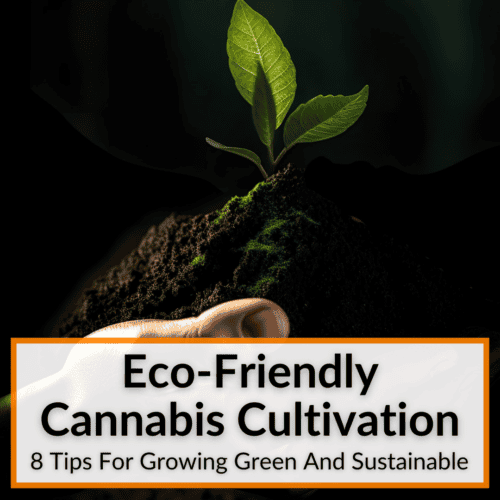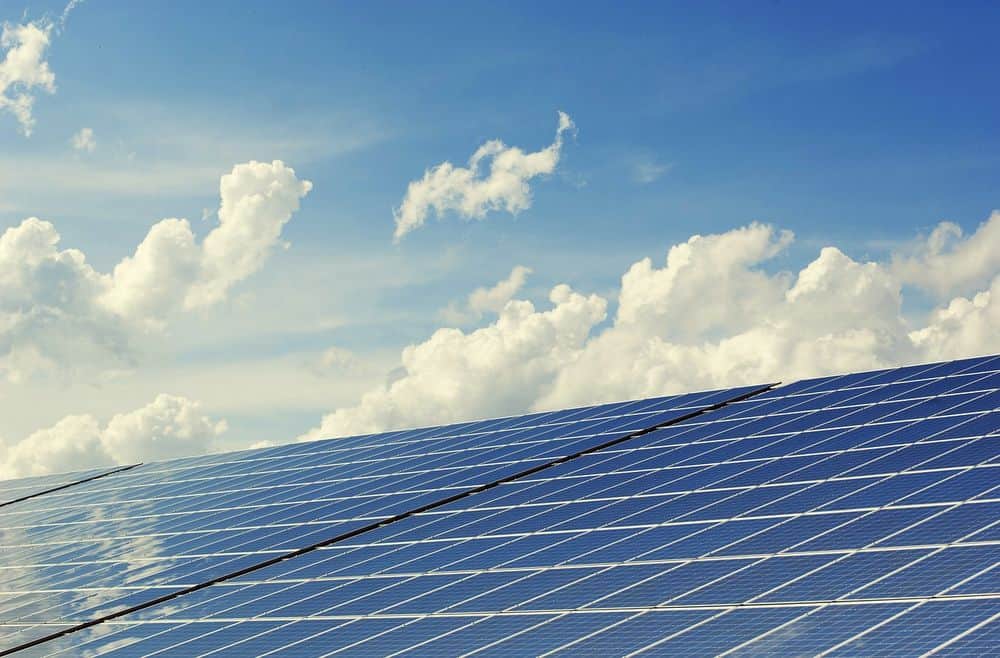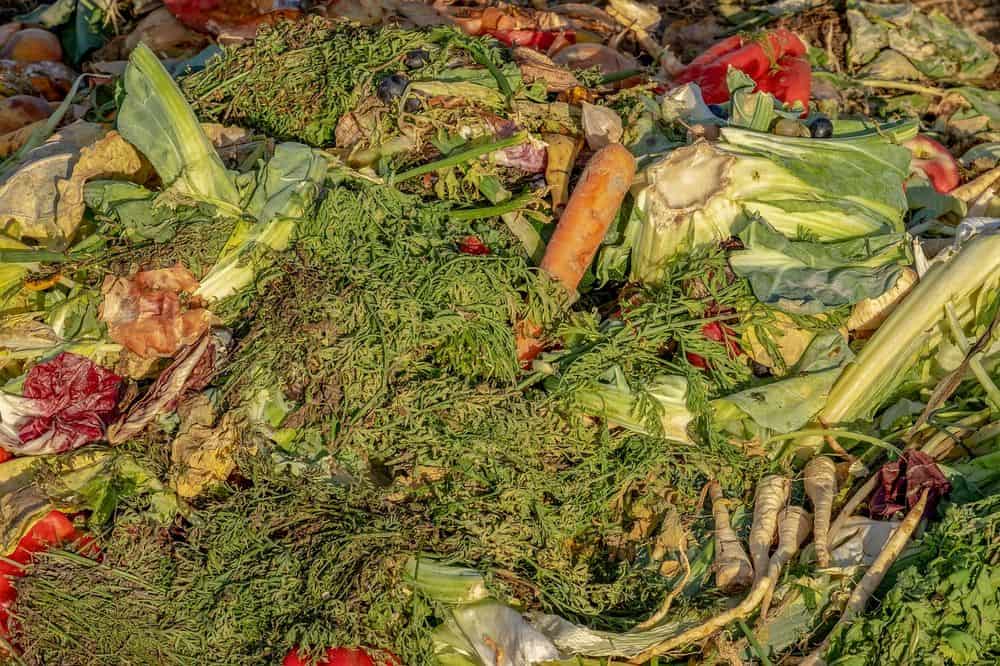 Growing indoors uses a lot of resources.
Growing indoors uses a lot of resources.
Not only does that cost us a lot of money, but it also does harm to the environment.
Growing completely green and sustainable is out of reach for most of us.
But we can all implement a few of the simpler eco-friendly cannabis cultivation techniques and see a good improvement.
So keep reading for 8 great tips to make your grow more eco-friendly. But first, let’s briefly discuss what exactly it means to grow your weed in a more eco-friendly manner.
Contents
What Is Eco-Friendly And Sustainable Cannabis Growing?
Cannabis is a water-intensive crop. Each plant uses between five and six gallons of water per day during the growing season, which is almost twice what other commodity crops use, regardless of whether it is grown indoors or outdoors.
Indoor cannabis cultivation is also energy-intensive. It costs legal growers in the United States an estimated $6 billion annually in energy bills. Furthermore, many growers use synthetic or chemical fertilizers, which can harm waterways and landfills.

All these factors highlight the need for greener and more sustainable cultivation practices.
Sustainable cannabis cultivation aims to reduce the environmental impact of growing the plant. This includes using renewable energy sources like solar or wind power instead of fossil fuels to power indoor grow lights and climate control systems.
Growers can also switch to natural or organic fertilizers instead of synthetic ones to protect soil and water health and prevent chemical runoff. Implementing water-saving techniques, such as drip irrigation and rainwater collection, can help conserve water and reduce waste.
8 Tips For Growing Green And Sustainable Cannabis
If you are looking to make your grow more eco-friendly, the following tips can help.
Grow Outdoors
As mentioned earlier, indoor cannabis growers face high energy bills due to the substantial amount of electricity required for lighting, ventilation, and climate control systems. To give you an idea, indoor cannabis growing requires 40 times the power required to grow lettuce.
Growing cannabis outdoors is more eco-friendly because it uses the sun’s natural light. This saves energy spent on lights and fans. Outdoor growing also uses rainwater, which reduces the need for indoor irrigation.
Use Alternative Energy Sources

Even a small-scale indoor cannabis grower can enhance sustainability by using alternative energy sources for key operations.
Examples include solar-powered fans or wind turbines, which can provide ventilation while reducing reliance on the grid. For watering, you can opt for solar-powered pumps or rainwater harvesting systems to cut down on municipal water use.
Additionally, using solar panels to power energy-efficient LED grow lights can significantly reduce energy consumption. These renewable energy solutions not only contribute to a greener, more sustainable farming practice, but they also lower energy bills and result in savings.
Use Water-Saving Techniques
Saving water is the most important aspect of green farming. In cannabis cultivation, you can use drip irrigation systems to save water. These systems deliver water directly to the plant roots and reduce evaporation and water waste.
Another technique is mulching, which involves placing a layer of organic material around the plants. This layer helps retain soil moisture and prevents water loss.
Collecting rainwater (rainwater harvesting) in barrels is another sustainable way to source water naturally. You should also water plants early in the morning or late in the evening, to minimize evaporation due to the daytime heat.
You should use methods to monitor soil moisture (such as the use of sensors) to determine when watering is necessary. This can help you avoid overwatering and conserve water.
Opt For Waste Management

Waste management in cannabis cultivation is important to enhance eco-friendliness and greener cultivation. Sustainable waste management practices not only contribute to a cleaner environment but also support the long-term health and productivity of cannabis cultivation.
There are several ways you can achieve this:
- You can compost plant waste, like leaves and stems, to create nutrient-rich soil amendments.
- You can minimize landfill waste to promote soil health.
- You can implement recycling programs for packaging materials, such as plastic pots and containers, which can help reduce plastic waste.
- You should ensure proper disposal of chemical fertilizers and pesticides to prevent soil and water contamination.
- You can also use biodegradable materials and encourage the reuse of growing mediums to significantly lower your ecological footprint.
Emphasize Organic Cultivation
Organic cannabis cultivation is better for the environment, because it helps avoid synthetic chemicals and pesticides. This, in turn, helps preserve soil health and reduce pollution.
By using natural fertilizers, such as compost or manure, you can enrich the soil with essential nutrients and promote biodiversity. Organic methods also conserve water by improving soil structure, which results in better water retention.
To cultivate cannabis organically, you can rotate your crops to maintain soil fertility and use companion planting to naturally deter pests. These practices not only produce cleaner, healthier cannabis but also reduce the ecological footprint of cultivation. It also supports long-term sustainability and protects local ecosystems.
Optimize Airflow

Optimizing airflow in cannabis cultivation is a greener practice, because it reduces the need for extra energy and chemicals.
Good airflow helps control temperature and humidity and keeps your plants healthy. Proper air circulation prevents the buildup of CO2-depleted air. Plants need CO2 for growth. It also helps remove excess heat from grow lights and reduces the risk of overheating.
To improve airflow, use fans to move air around the plants. Make sure the space has proper ventilation, like windows or vents, to let fresh air in and stale air out. These steps create a balanced environment that supports your cannabis plants’ health and reduces environmental impact.
Opt For Regenerative Farming
Regenerative farming in cannabis cultivation is a greener and more sustainable method of farming that focuses on restoring soil health and biodiversity. This approach uses natural processes to improve soil fertility and structure and reduces the need for synthetic fertilizers.
Regenerative farming involves planting the cannabis outdoors and rotating it with cover crops like clover or rye to maintain soil nutrients. During the off-season, you can add compost, beneficial microbes, and animal droppings from the same farm to enrich the soil.
These practices promote a self-sustaining ecosystem, enhance water retention, and reduce environmental impact.
Use Sustainable Packaging
Sustainable packaging in cannabis cultivation can help reduce environmental impact. Growers, dispensaries, and operators can minimize waste by using less material.
They should choose recyclable or biodegradable packaging options for cannabis products. These options can protect the product and serve marketing purposes without creating excessive waste.
Sustainable packaging practices also decrease the carbon footprint and resource use associated with production and disposal.
By prioritizing sustainability, the cannabis industry can contribute to greener cultivation and distribution practices. They can help promote long-term environmental health while reducing the strain on natural resources.
Growing Eco-Friendly Cannabis: Final Thoughts
Eco-friendly and sustainable cannabis cultivation is essential for reducing the environmental impact of this water and energy-intensive crop.
By adopting practices such as outdoor growing, using renewable energy sources, and implementing water-saving techniques, you can significantly decrease your ecological footprint.
Additionally, prioritizing waste management, organic cultivation, optimized airflow, regenerative farming, and sustainable packaging can further enhance the sustainability of cannabis production.
These efforts not only protect natural resources but also promote the long-term health and productivity of cannabis cultivation. As the industry continues to grow, integrating these eco-friendly practices will be crucial to ensure that cannabis farming remains both environmentally responsible and economically viable.
By making these changes, the cannabis industry can set a standard for sustainable agriculture and contribute to a healthier planet.
Leave a Reply